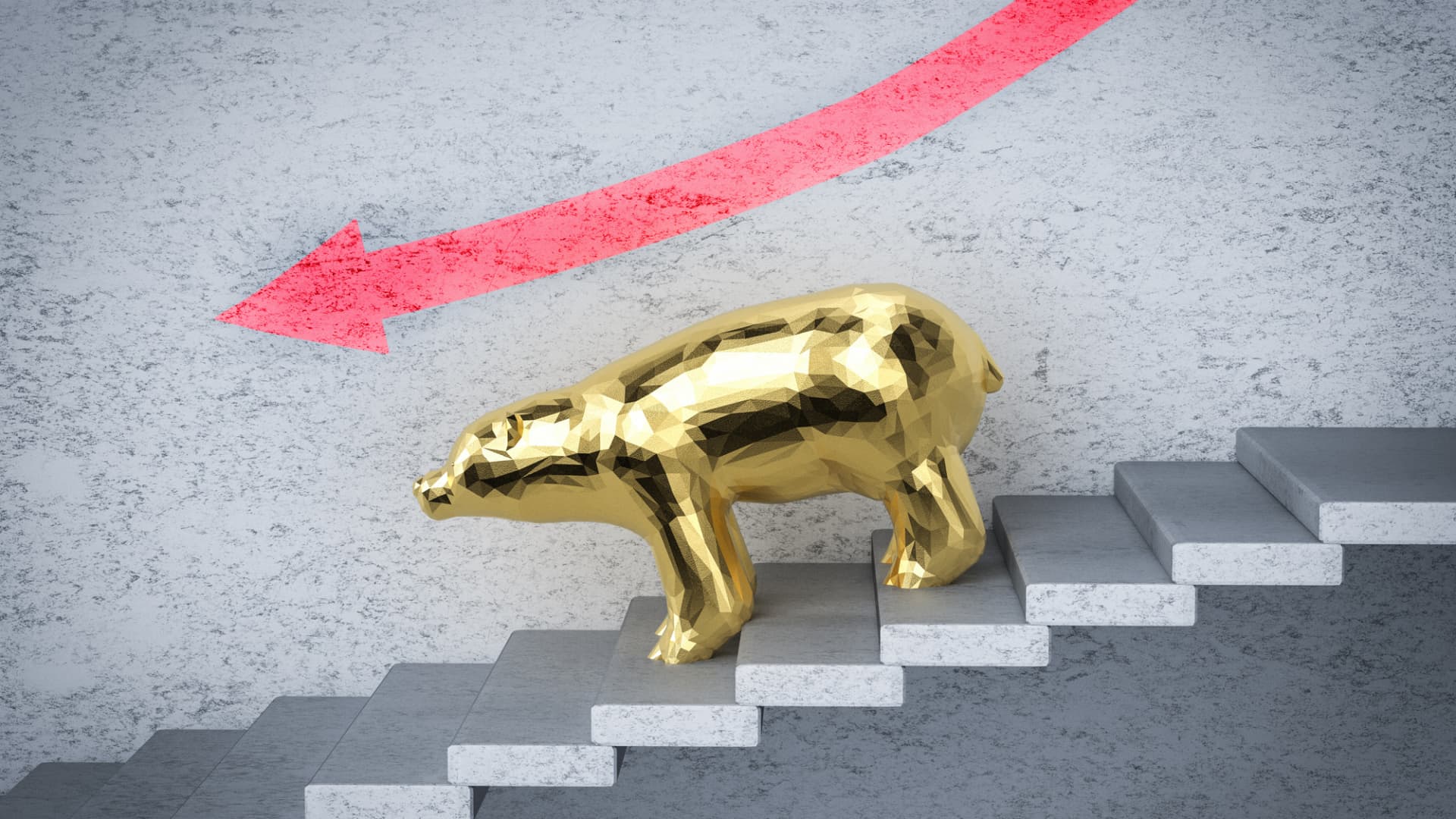Products You May Like
The S&P 500 Index fell into a so-called bear market on Friday. But just what does that mean?
“Bear market” is a term used by investors to describe a steep and sustained market downturn. Technically, it’s a drop of 20% or more from recent highs.
Investors commonly apply the phrase to a broad stock index like the S&P 500 or Dow Jones Industrial Average, but it also works for individual stocks.
More from Personal Finance:
Climbing interest rates mean good news for annuity buyers
It’s a good time for young investors to put money in market
Women are still paid 83 cents for every dollar men earn
The tech-heavy Nasdaq Composite stock index is already in a bear market. Wall Street is currently spooked by many factors, including high inflation, rising interest rates, war in Ukraine and the fear of recession.
There isn’t anything particularly special about the 20% demarcation line used to define a bear market. It’s more a symbol and a psychological hurdle for investors.
“It’s a shortcut in language around the financial markets that people use,” said Charlie Fitzgerald III, an Orlando, Florida-based certified financial planner, of bear markets. “The bottom line is, it’s a tough time.”
By comparison, a “bull market” is a period when stocks are surging, which has largely been the case since the Great Recession.
Bear markets are a regular feature of the stock market. Since World War II, there have been nine declines of 20% to 40% in the S&P 500, and three others over 40%, according to Guggenheim Investments. (The analysis doesn’t include 2022.)
On average, stocks took 14 months and 58 months to recover, respectively, after those declines. The last bear market occurred in February and March 2020, when the S&P 500 slid 34%. However, stocks rebounded by mid-August.
It’s impossible to say how long the current downturn will last, Fitzgerald said. “Human emotions are just a difficult thing to predict,” he said.
